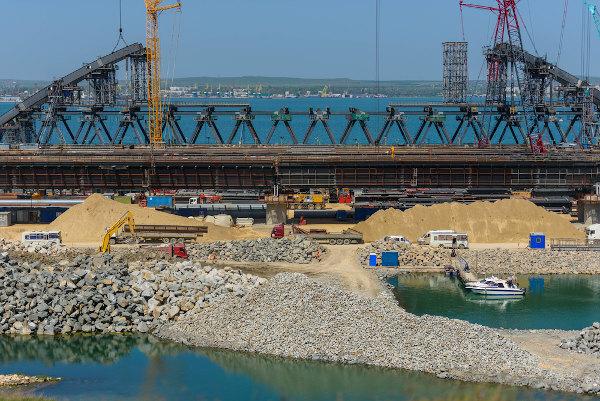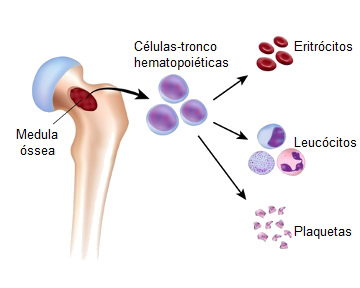At rocks they are mostly present in the lithosphere, the planet's solid layer that shelters human beings, being widely exploited due to the natural and mineral resources that exist in it. these rocks are formed from the junction of minerals(only one mineral or more than one). Rocks that have only one mineral in their composition are considered simple rocks, like marble. Rocks that have more than one mineral in their formation are composite rocks, like granite.
The minerals, in turn, are natural elements, and the vast majority of them are solid. They have a defined chemical composition, being formed by inorganic processes. Examples of minerals are:
the limestone,
the quartz,
the talc,
mercury (it and water are the only liquid minerals existing under normal conditions of temperature and pressure).
Read too: What is the center of the Earth like?
rock formation
The rocks form from the aggregation of minerals over millions of years. When there is a junction of minerals, we have the formation of a rocky compound.

This formation can occur inside the Earth, in the layers below the lithosphere composed of magma, or abroad, like the rocks formed from erosive processes (rain, river, wind), which makes it possible to use these rocks in various human activities: civil construction, industries and even in gifts, such as gold and silver, minerals found in rocks. Thus, in order to have the formation of rocks, the minerals must be grouped together.
Types of rocks
The rocks can be found in various forms and used in various human activities, mainly in civil construction and industries as raw material. They are classified according to their origin and formation into three groups.
magmatic rocks
Magmatic rocks form from the magma cooling inside the Earth. This type of rock is called intrusive magmatic, as it is formed inside volcanoes. There may also be magmatic rocks formed with the cooling of magma outside the lithosphere, on the surface (Earth's crust). These rocks are called extrusive magmatics, as they were formed on the outside of the planet. Remember that when magma reaches the surface, it is called lava.
See too: Why do volcanoes erupt?
sedimentary rocks
Sedimentary rocks, as the name implies, are formed from deposited and compacted sediments for thousands of years. These sediments are fragments of other rocks transported by erosive processes, such as the action of water, wind and rain, being deposited in lower areas. The wear of a rock from higher areas is natural, contributing to the formation of sedimentary rocks.

These rocks have horizontal layers, the lower layers being older than the upper layers. They are the most fragile rocks that exist.
metamorphic rocks
Metamorphic rocks are those originated from the transformation (metamorphosis) that other rocks have undergone over thousands of years, as a result of heat, of weathering or even the pressure inside the lithosphere. When this transformation occurs, new rocks appear, with structures different from the original ones.
examples of rocks
Let's look at some examples of the three types of rocks that exist.
Magmatic rocks (igneous): granite (intrusive) and basalt (extrusive) are more common.

Sedimentary rocks: sandstone, limestone, varvite, claystone.
Metamorphic rocks: marble, quartzite and gneiss.
Also access: Why are there no volcanoes in Brazil?
solved exercises
Question 1 - (Unit SE/2016)
Natural resources are goods existing in a natural or raw state, useful for a certain population and that can be economically exploited by a country. Any portion of the natural environment can be considered a natural resource. Examples include mineral deposits, oil basins, rocks, soils, rivers, water, plants, animals, air, forests and microorganisms that carry out vital biochemical processes. For any of these assets to be turned into an exploitable resource, human intervention is required to discover its location and develop the appropriate exploration technology.
GUERINO, Luiza Angelica. Geography: The dynamics of geographic space. Curitiba: Positive, v. 1. 2013.
The analysis of the text and knowledge about natural resources and their economic use allow us to state:
A) underdeveloped countries have always sought to control mineral reserves inside and outside their borders.
B) mineral resources are vital for the development of a country, due to its importance as a raw material, especially for basic industry, such as metallurgy and heavy chemicals.
C) UN data reveal that America is the world's main producer and consumer of energy, followed by Asia, as the second largest producer, and Europe, as the second largest consumer.
D) the excessive exploitation of non-renewable natural resources — oil, natural gas, iron, manganese —, controlled by multinationals, it always leads to the enrichment of the countries where the deposits are located.
E) the increase in latitude favors timber exploration and exports, due to the expansion of new occupied areas and the variety of plants.
Resolution
Alternative B. Mineral resources, including soils and rocks, are essential for the economic development of a region, mainly the base industry, with the exploration of sedimentary rocks and metamorphic.
Question 2 - (UEPG)
Consisting of minerals and rocks, the lithosphere suffers the action of internal Earth agents, which contribute to the establishment of the modeling of its forms, that is, the relief. In relation to this matter, mark the correct one.
01) Rocks are aggregates of minerals that form the essential part of the lithosphere. They are of three types: igneous or magmatic, sedimentary and metamorphic.
02) Minerals are natural inorganic masses of defined chemical composition, with one or several types of crystallization, found in the earth's crust. Examples of minerals are quartz, talc and diamond.
04) Sedimentary rocks in the earth's crust are the result of the transformation of other rocks, due to pressure or temperature, such as gneiss, slate and marble.
08) Tectonism results from forces that, coming from the Earth's interior, affect the surface, causing changes in the relief. Among the tectonic movements, the folding and epiregenesis stand out.
Resolution
Sum of correct items: 9 (01 + 08).
Items 02 and 04 are incorrect, as minerals are chemical compounds formed by inorganic processes. Furthermore, sedimentary rocks are not formed from the transformation of other rocks, but from sediments accumulated and/or transported over thousands (or millions) of years.
Image credit
[1] Uliya Krakos / Shutterstock



